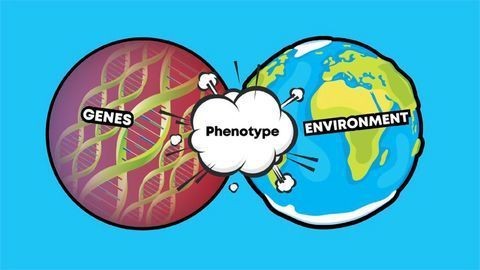Genes and alleles are fundamental concepts in genetics, but understanding the difference is crucial. This guide provides a comprehensive explanation of alleles, their relationship to genes, and their role in inheritance and phenotypic expression.
Genes vs. Alleles: A Comparative Overview
Genes are segments of DNA that provide instructions for building proteins, which influence our traits. Alleles, on the other hand, are different versions of the same gene, resulting in variations in those traits. Your unique combination of alleles constitutes your genotype.
Defining a Gene
Genes are specific sequences of DNA that contribute to particular characteristics or functions. They act as blueprints for creating proteins or protein components that affect various aspects of our biology, such as immune responses, skin pigmentation, hormone production, and even eye color. Genes are transcribed into RNA, which is then translated into proteins.
A gene consists of both coding (exons) and non-coding (introns) regions. Exons are the sections that are transcribed into RNA and ultimately translated into protein. Introns, while not transcribed, play regulatory roles, influencing when and how genes are expressed. Humans possess approximately 20,000 protein-coding genes, representing less than 2% of our entire genome.
Inherited from parents, genes are the carriers of hereditary information, passing traits from one generation to the next. The complete set of genes within an organism is its genotype. Every human has a unique genotype, contributing to the diversity we see in human appearance and biology.
While the traditional view of a gene was a fixed unit of inheritance (“one gene-one RNA-one protein”), advancements in genomics have revealed more complex mechanisms. For example, alternative splicing allows a single gene to produce multiple RNA molecules and, consequently, different proteins.
 Genotype vs Phenotype: Examples and Definitions
Genotype vs Phenotype: Examples and Definitions
Understanding Alleles: Variations of a Gene
Alleles are defined as alternative forms of a gene that occur at a specific location, or locus, on a chromosome. These variations arise from differences in the DNA sequence at that locus. For example, at a specific locus determining blood type, one allele might code for type A blood, while another codes for type B blood.
Humans are diploid organisms, meaning we inherit two copies of each chromosome – one from each parent. This means that we have two alleles for every gene.
The specific combination of alleles an individual possesses across their genome constitutes their genotype. While these alleles code for the same trait (e.g., eye color), they can result in different expressions of that trait, known as an organism’s phenotype. In many cases, multiple genes and their alleles interact to determine how a trait is expressed.
Consider eye color, where blue, green, brown, and hazel eyes are each determined by different sets of alleles at specific genetic loci. Research suggests that approximately 16 different genes contribute to eye color, with two of these genes having the most significant influence.
The greater the number of alleles possible for a given trait, the more diversity exists in its expression. This interplay of genes and their variant alleles underlies human genetic diversity and is the reason why individuals are unique.
Major vs. Minor Alleles
The most frequent allele in a population is designated the major allele, while less common versions are referred to as minor alleles. The distribution of major and minor alleles can vary between different populations.
The Inheritance of Genes and Alleles
During sexual reproduction, sperm and egg cells (gametes) carry one copy of each chromosome. In humans, the fusion of a sperm cell and an egg cell results in a zygote with 23 chromosomes from each parent, for a total of 46. Each matching chromosome pair contains the same set of genes, but with potentially different alleles at each locus.
This inheritance pattern dictates that individuals possess two gene copies for each trait, one inherited from their mother (maternal allele) and the other from their father (paternal allele). The interaction between these alleles determines an individual’s unique characteristics.
Dominant and Recessive Genes Explained
An individual’s genotype is the complete set of genes encoded on their 46 chromosomes. However, not all gene variations are visibly expressed. For example, an individual might have one allele for brown eyes and one for blue eyes, but they will not have one blue and one brown eye. The expressed traits result in the phenotype, which is the observable manifestation of the genotype.
The body determines which alleles to express based on their properties when paired. When the two alleles for a gene are the same, the individual is said to be homozygous for that gene. When the alleles are different, the individual is heterozygous.
Homozygous individuals express the trait coded for by the allele they possess. For example, if someone has two blue eye alleles, their eyes will be blue. However, in heterozygous individuals, the expression of the trait depends on whether one allele is dominant or recessive.
A dominant allele is one that masks the expression of the other allele when present in a heterozygous individual. Conversely, a recessive allele is only expressed when paired with another recessive allele in a homozygous individual.
In the case of eye color, the brown eye allele is dominant to the blue eye allele. Therefore, a child inheriting a blue allele from their mother and a brown allele from their father will have brown eyes. Only a child with two blue alleles will exhibit the blue eye phenotype.
Genes vs. Alleles: A Summary Table
| Feature | Gene | Allele |
|---|---|---|
| Definition | A segment of DNA encoding a specific trait | A variant form of a gene |
| Role | Determines individual traits | Contributes to diversity in trait expression |
| Determines | An organism’s genotype | An organism’s phenotype |
| Number per locus | One | Two |
| Types | N/A | Dominant vs. recessive, maternal vs. paternal |
| Examples | Eye color, hair texture, height | Blue eyes, curly hair, tall height |
In conclusion, understanding the concepts of genes and alleles is vital for grasping the mechanisms of inheritance and genetic variation. Alleles, as different versions of genes, contribute to the diversity of traits observed in populations. The interplay between dominant and recessive alleles, along with environmental factors, shapes an individual’s phenotype.
